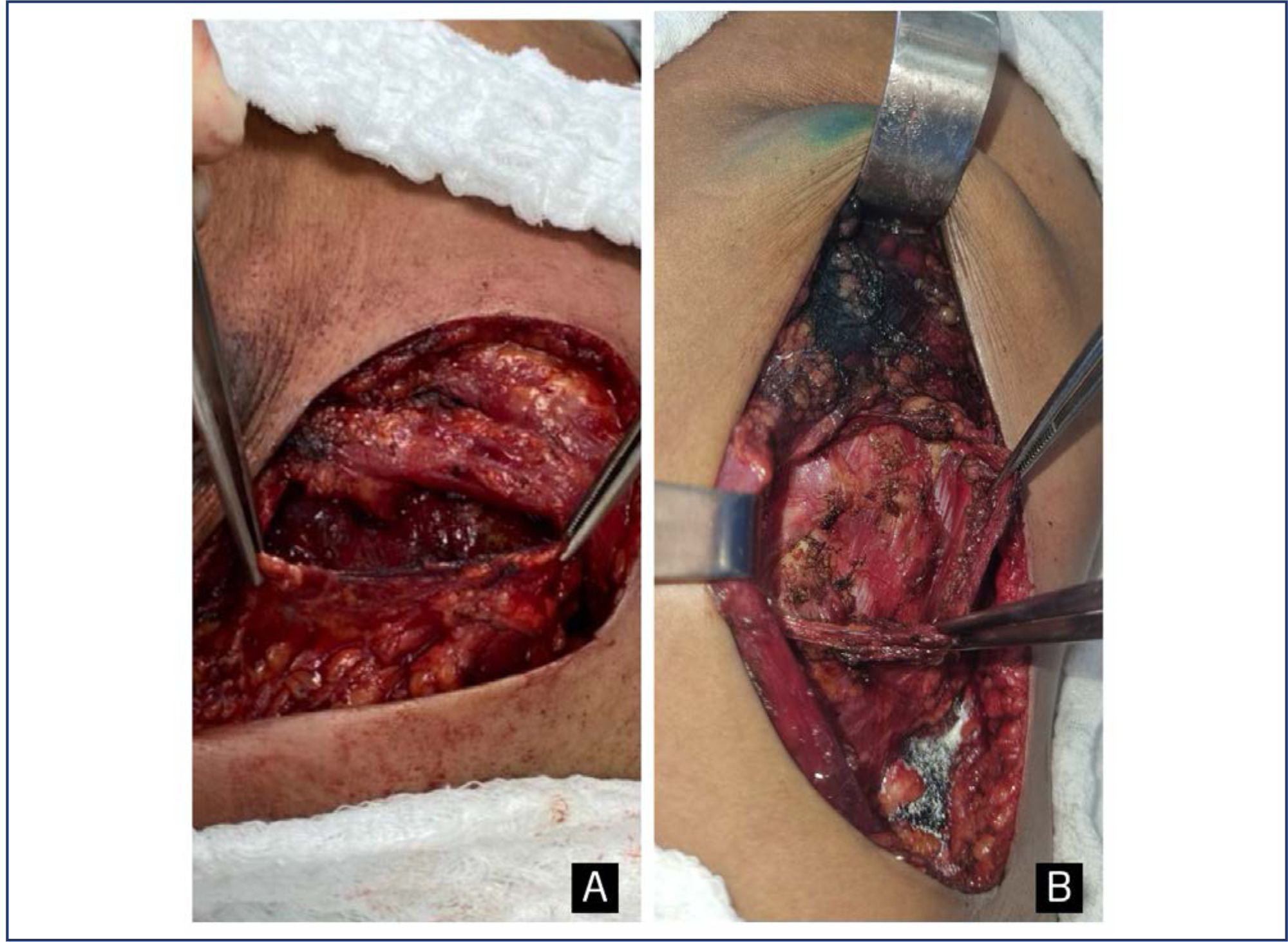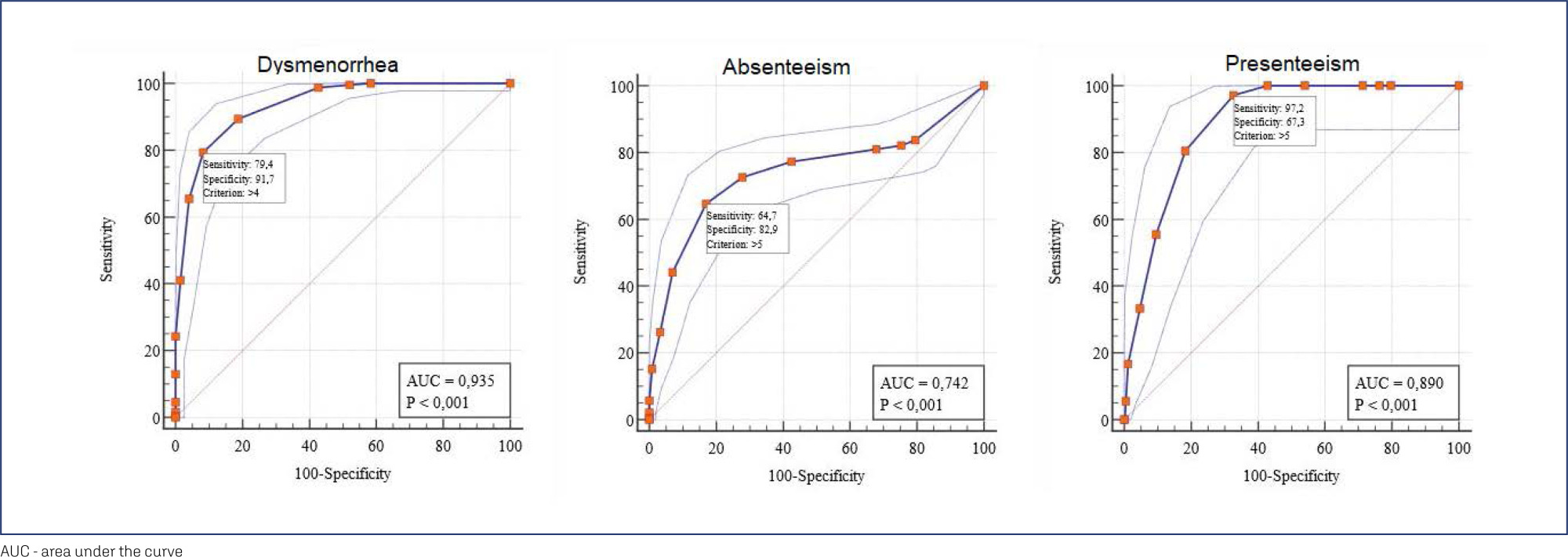Summary
Revista Brasileira de Ginecologia e Obstetrícia. 2024;46:e-rbgo12
Endometriosis is a complex disease that affects 10-15% of women of reproductive age. Familial studies show that relatives of affected patients have a higher risk of developing the disease, implicating a genetic role for this disorder. Little is known about the impact of germline genomic copy number variant (CNV) polymorphisms on the heredity of the disease. In this study, we describe a rare CNV identified in two sisters with familial endometriosis, which contain genes that may increase the susceptibility and progression of this disease. We investigated the presence of CNVs from the endometrium and blood of the sisters with endometriosis and normal endometrium of five women as controls without the disease using array-CGH through the Agilent 2x400K platform. We excluded common CNVs that were present in the database of genomic variation. We identified, in both sisters, a rare CNV gain affecting 113kb at band 3q12.2 involving two candidate genes: ADGRG7 and TFG. The CNV gain was validated by qPCR. ADGRG7 is located at 3q12.2 and encodes a G protein-coupled receptor influencing the NF-kappaβ pathway. TFG participates in chromosomal translocations associated with hematologic tumor and soft tissue sarcomas, and is also involved in the NF-kappa B pathway. The CNV gain in this family provides a new candidate genetic marker for future familial endometriosis studies. Additional longitudinal studies of affected families must confirm any associations between this rare CNV gain and genes involved in the NF-kappaβ pathway in predisposition to endometriosis.
Summary
Revista Brasileira de Ginecologia e Obstetrícia. 2024;46:e-rbgo13
The purpose of this study was to compare postoperative pain between SF flap and serratus anterior muscle (SM) in direct-to-implant breast reconstruction.
This is a prospective cohort study that included 53 women diagnosed with breast cancer who underwent mastectomy and one-stage implant-based breast reconstruction from January 2020 to March 2021. Twenty-nine patients (54.7%) had SF elevation, and 24 patients (45.3%) underwent SM elevation. We evaluated patient-reported early postoperative pain on the first day after surgery. Also, it was reported that all surgical complications in the first month and patient reported outcomes (PROs) were measured with the BRECON 23 questionnaire.
The serratus fascia group used implants with larger volumes, 407.6 ± 98.9 cc (p < 0.01). There was no significant difference between the fascial and muscular groups regarding the postoperative pain score reported by the patients (2 versus 3; p = 0.30). Also, there was no difference between the groups regarding early surgical complications and PROs after breast reconstruction.
The use of SF seems to cause less morbidity, which makes the technique an alternative to be considered in breast reconstruction. Although there was no statistical difference in postoperative pain scores between the fascia and serratus muscle groups.

Summary
Revista Brasileira de Ginecologia e Obstetrícia. 2024;46:e-rbgo14
Postpartum hemorrhage (PPH) is the leading cause of maternal death globally. Therefore, prevention strategies have been created. The study aimed to evaluate the occurrence of PPH and its risk factors after implementing a risk stratification at admission in a teaching hospital.
A retrospective cohort involving a database of SISMATER® electronic medical record. Classification in low, medium, or high risk for PPH was performed through data filled out by the obstetrician-assistant. PPH frequency was calculated, compared among these groups and associated with the risk factors.
The prevalence of PPH was 6.8%, 131 among 1,936 women. Sixty-eight (51.9%) of them occurred in the high-risk group, 30 (22.9%) in the medium-risk and 33 (25.2%) in the low-risk group. The adjusted-odds ratio (OR) for PPH were analyzed using a confidence interval (95% CI) and was significantly higher in who presented multiple pregnancy (OR 2.88, 95% CI 1.28 to 6.49), active bleeding on admission (OR 6.12, 95% CI 1.20 to 4.65), non-cephalic presentation (OR 2.36, 95% CI 1.20 to 4.65), retained placenta (OR 9.39, 95% CI 2.90 to 30.46) and placental abruption (OR 6.95, 95% CI 2.06 to 23.48). Vaginal delivery figured out as a protective factor (OR 0.58, 95% CI 0.34 to 0.98).
Prediction of PPH is still a challenge since its unpredictable factor arrangements. The fact that the analysis did not demonstrate a relationship between risk category and frequency of PPH could be attributable to the efficacy of the strategy: Women classified as "high-risk" received adequate medical care, consequently.
Summary
Revista Brasileira de Ginecologia e Obstetrícia. 2024;46:e-rbgo15
To compare the medical image interpretation's time between the conventional and automated methods of breast ultrasound in patients with breast lesions. Secondarily, to evaluate the agreement between the two methods and interobservers.
This is a cross-sectional study with prospective data collection. The agreement's degrees were established in relation to the breast lesions's ultrasound descriptors. To determine the accuracy of each method, a biopsy of suspicious lesions was performed, considering the histopathological result as the diagnostic gold standard.
We evaluated 27 women. Conventional ultrasound used an average medical time of 10.77 minutes (± 2.55) greater than the average of 7.38 minutes (± 2.06) for automated ultrasound (p<0.001). The degrees of agreement between the methods ranged from 0.75 to 0.95 for researcher 1 and from 0.71 to 0.98 for researcher 2. Among the researchers, the degrees of agreement were between 0.63 and 1 for automated ultrasound and between 0.68 and 1 for conventional ultrasound. The area of the ROC curve for the conventional method was 0.67 (p=0.003) for researcher 1 and 0.72 (p<0.001) for researcher 2. The area of the ROC curve for the automated method was 0. 69 (p=0.001) for researcher 1 and 0.78 (p<0.001) for researcher 2.
We observed less time devoted by the physician to automated ultrasound compared to conventional ultrasound, maintaining accuracy. There was substantial or strong to perfect interobserver agreement and substantial or strong to almost perfect agreement between the methods.
Summary
Revista Brasileira de Ginecologia e Obstetrícia. 2024;46:e-rbgo16
Dysmenorrhea is the pain related to menstruation; to screen for the symptoms, a working ability, location, intensity of days of pain, and dysmenorrhea (WaLIDD) score was created. The purpose of this work was to culturally adapt and assess the measurement properties of the WaLIDD score for dysmenorrhea in Brazilian women.
In this cross-sectional online study, we evaluated women with and without dysmenorrhea. Criterion validity and construct validity were assessed, respectively, by the Receiver Operator Characteristic (ROC) curve and correlations with the bodily pain and social functioning domains of medical outcomes study 36-item short-form health survey (SF-36), self-report of absenteeism and Stanford Presenteeism Scale for presenteeism. Test-retest reliability and measurement errors were assessed, respectively, by intraclass correlation coefficient (ICC) and Bland and Altman Graph.
430 women completed the test, 238 (55.4%) women had dysmenorrhea, and 199 (46.3%) answered the questionnaire twice for the retest. The cutoff points ≥4, ≥5, and ≥5 could discriminate between women with and without dysmenorrhea, absenteeism, and presenteeism related to dysmenorrhea, respectively. Correlations between SF-36 – pain and social functioning domains and WaLIDD score were weak to strong and negative. For WaLIDD total Score, ICC was 0.95 and the limits of agreement were −1.54 and 1.62.
WaLIDD score is a short, valid and reliable instrument to screen and predict dysmenorrhea and could predict absenteeism and presenteeism related to dysmenorrhea in Brazilian women.

Summary
Revista Brasileira de Ginecologia e Obstetrícia. 2024;46:e-rbgo17
To determine the prevalence of anxiety, depression and burnout in residents of Gynecology and Obstetrics during COVID-19 pandemic in Brazil and its associated factors.
Cross-sectional study involving all regions of Brazil, through the application of a sociodemographic questionnaire, the Hospital Anxiety and Depression Scale (HAD) and the Maslach Burnout Inventory (MBI-HSS) instrument. Multivariate analysis was performed after adjusting the Poisson model.
Among the 719 participating medical residents, screening was positive for anxiety in 75.7% and for depression in 49.8% of cases. Burnout syndrome was evidenced in 41.3% of the physicians studied. Those with depression are more likely to have anxiety (OR 0.797; 95%CI 0.687 - 0.925) and burnout syndrome (OR 0.847 95%CI 0.74 - 0.97). Residents with anxiety (OR 0.805; 95%CI 0.699 - 0.928) and burnout (OR 0.841; 95%CI 0.734 - 0.963) are more likely to have depression.
High prevalence of anxiety, depression and burnout were found in residents of Gynecology and Obstetrics in Brazil, in addition to important correlations between anxiety-depression and depression-burnout.
Summary
Revista Brasileira de Ginecologia e Obstetrícia. 2024;46:e-rbgo18
Despite the literature on dydrogesterone, studies on dydrogesterone utilization patterns are largely lacking in Indian patients.
This was a multi-center, retrospective, observational, cross-sectional, and descriptive study across 817 centers in India. Data of patients who received dydrogesterone in past and provided consent for future use of their medical record for research purpose was were retrieved and analyzed.
Data of 7287 subjects (aged 29.55±4.84 years) was analyzed. Threatened abortion was the most common indication for which the subjects received dydrogesterone (46.9%) followed by recurrent pregnancy loss. Polycystic ovary syndrome (PCOS), thyroid disorders and anemia were the most common comorbid conditions and prior pregnancy loss, advanced maternal age and obesity were the most common risk factors seen in subjects who received dydrogesterone. Total 27.5% of subjects received a loading dose of dydrogesterone, and majority (64%) received 40 mg as loading dose. 10 mg dose was used as maintenance or regular dose in 81.4% of the subjects. Twice daily (BID) was the most common dosing frequency (66.6%). The most common concomitant medications being taken by the subjects on dydrogesterone included folic acid (45.1%), iron supplements (30.3%) and calcium and vitamin D3 supplements (25.5%). Another progesterone preparation (oral, injection, vaginal, tubal) other than dydrogesterone was used concurrently in 7.8% of subjects.
The study helped to identify the patient population that is benefitted by dydrogesterone and the preferred indications, risk factors, comorbid conditions and concomitant medication used in this patient population at real-life scenario.

Summary
Revista Brasileira de Ginecologia e Obstetrícia. 2024;46:e-rbgo19
To examine whether the DDAH2 promoter polymorphisms -1415G/A (rs2272592), -1151A/C (rs805304) and -449G/C (rs805305), and their haplotypes, are associated with PE compared with normotensive pregnant women, and whether they affect ADMA levels in these groups.
A total of 208 pregnant women were included in the study and classified as early-onset (N=57) or late-onset PE (N =49), and as normotensive pregnant women (N = 102).
Pregnant with early-onset PE carrying the GC and GG genotypes for the DDAH2 -449G/C polymorphism had increased ADMA levels (P=0.01). No association of DDAH2 polymorphisms with PE in single-locus analysis was found. However, the G-C-G haplotype was associated with the risk for late-onset PE.
It is suggested that DDAH2 polymorphisms could affect ADMA levels in PE, and that DDAH2 haplotypes may affect the risk for PE.